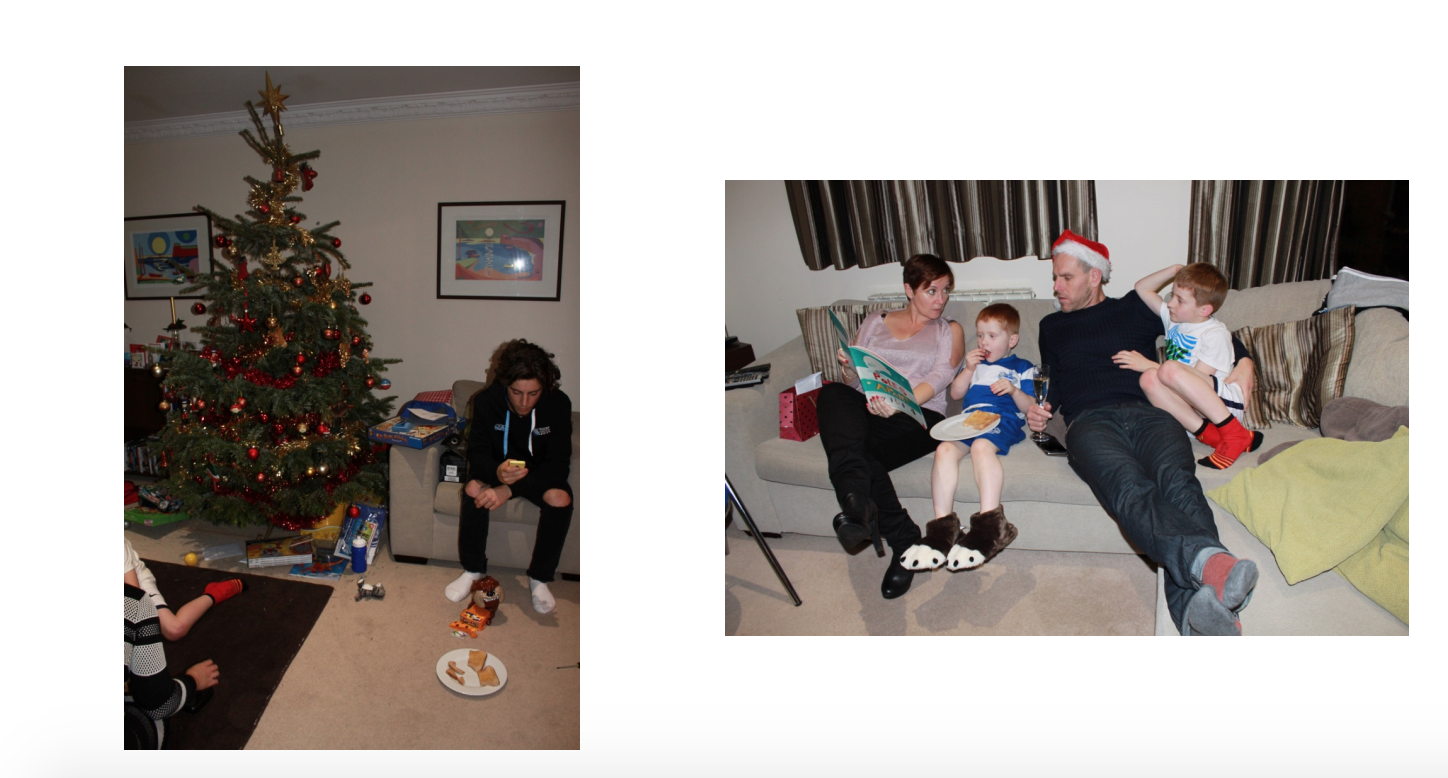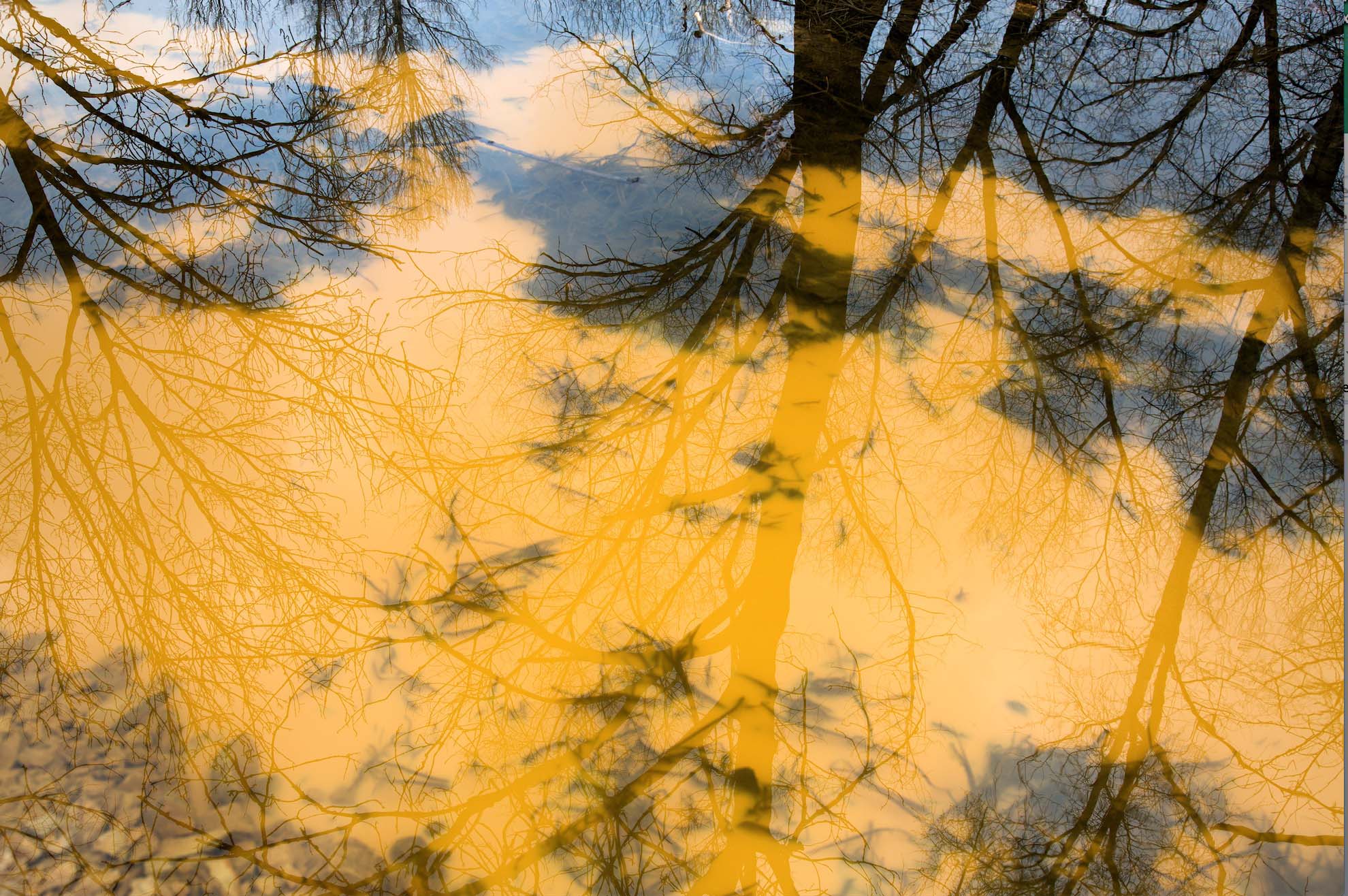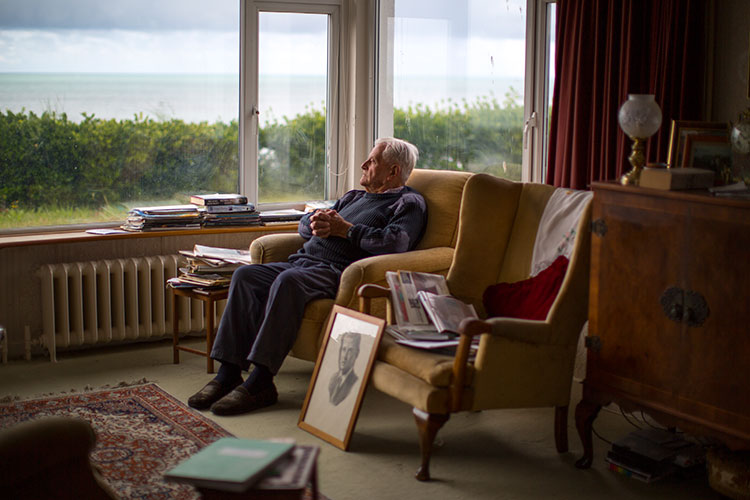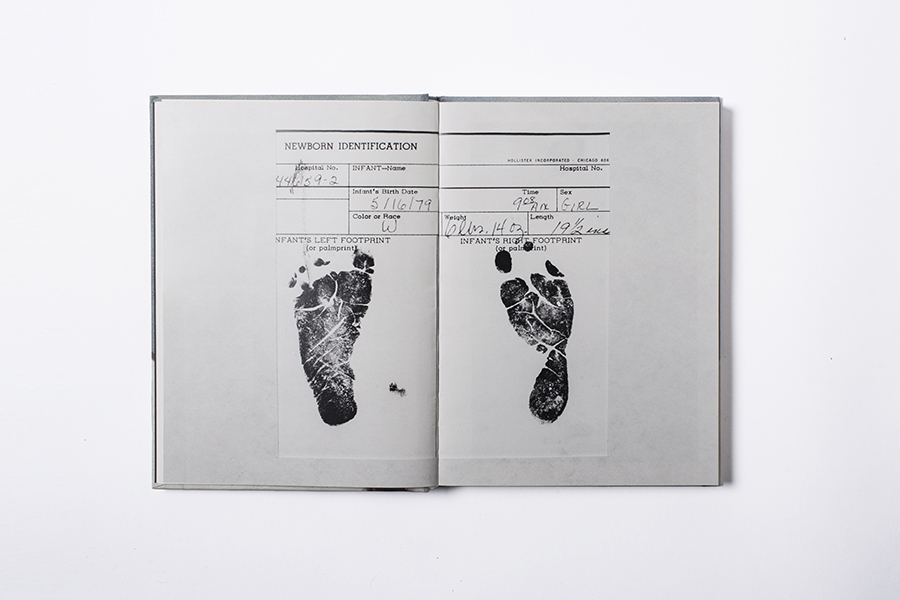My first shoot that I have done this holiday was on Christmas day. I chose todo a shoot because it is a very family orientated day, therefore I had the chance to photograph my grandparents surrounded by their family. Family is so important to my grandparents so I think I defiantly need to capture them in their family environment.
Case Study – Elin Hoyland: Brother-Sister
“This way of working helped us to get to know each other and me gaining his trust”
Plan
Read up on the work of portrait photographer Erin Hoyland. Then look at her latest series ‘Brother-Sister’. Make a blog post on findings, and then make a photographic response.
http://www.bjp-online.com/2015/12/elin-hoyland-brother-sister/
About Photographer
Elin Hoyland is a Norwegian documentary photographer, based in Oslo. Hoyland bases much of her work living and photographing old people in Norway who have lived unusual and interesting lives. She is best known for her publication of two books, ‘The Brothers’, 2014 (Winner of the Documentary Book award at Moscow International Photo Awards 2014), and ‘Brother-Sister’, 2014.
Hoylannd will often live with her subjects for weeks at a time, gaining their trust and making very revealing and personal images from this. Hoyland has a very subtle and poetic style, evoking the themes of isolation and loneliness in way she photographs mysterious, old fashioned ornaments and sparse, barren landscapes. This is done to highlight the emotional day to day experience of her subject manner, haunted by memories of the past and dealing with missing sometime, whilst having to cope anyway with the day to day challenges of ageing.
She specialises in still-life photography, revealing a story through details and close-up aspects of relevance to her subjects and were they live.
Mr Toft showed me Hoyland’s ‘Brother-Sister’ as inspiration for my personal study. The theme of this project going in the house of an old person who lives alone, photographing them and were they live, is exactly the same theme off my project. I hope to resonate this through my own photoggraphy over the upcoming few weeks.
What is it?
The story ‘Brother-Sister’ is very much a retrospective look into the past. It examines the bond between twin brother and sister, Edvard and Bergit, who lived together since birth in a village in SW Norway. The twins lived in an old fashioned farm house with horses, cows, pigs and hens. Bergit recently died, which meant the livestock on the farm had to be sold and rented out. Edvard, unmarried like his sister was therefore very much alone.
Originally, Hoyland was commissioned as a photojournalist to document the cottage, as it is over 200 years old. In the process, she struck up a friendship with the occupant, Edvard who told her his story. Over the course of a few weeks, Hoyland lived with Edvard, photographing him and his house. The photographs taken during this time make up the series.
It looks at Edvard’s daily life; day to day activities, the way he lives, struggle with loneliness, and the constant reminder of his late sister evoked within his house. Many the photographs are still-life images of the house, areas including the bathroom, garden and bedroom of both twins. These image make up a story exploring their retrospective relationship, traces of Bergit are throughout the story and her presence it very much sensed.
Analysis

This photograph is a still-life image of a bathroom dresser. I find this image to be very strong and effective because of its strong colour contrasts, texture and use of reflection to evoke a mysterious atmosphere. From this photograph it is clear that the bathroom is of a traditional Scandinavian style, being therefore very personal and subjective to the subject.
The style of the wallpaper is bright red with a flowered pattern, a classic Nordic style. This bold and abrupt style gives the image a strong presence and texture, and a somewhat harsh tone. The presence of red in images often evokes strong themes, such as death, sacrifice and danger. Subsequently the presence of this colour creates an energetic and somewhat unsettling atmosphere. Therefore the viewer is very drawn into the atmosphere, however it is not inviting as it would be for example, if it was a blue colour, which is much calmer
Along with the traditional wallpaper, the incorporation of dolls connects the style of this dresser to be old fashioned. As mentioned it has a very Nordic style, and this adds to it. I find this is effective because it gives a certain character to the image. The use of this image in the photo-book is very important because it is a visual illustration of both and age, as well as culture of the subject. The two dolls are perhaps symbolic of the subjects relationship with his late sister.
The mirror immediately links to the idea of reflection and perception. It is a metaphor both of the subject looking back in their past, as well as the present, as they look into the mirror everyday. This idea is conveyed in a very subtle very as the viewer assumes that the mirror is just an objective photographer of the mirror. However it cannot be ignored that the mirror is fogged up – this draws emphasis to the mirror and therefore conveys as sense of contextual/symbolic relevance.
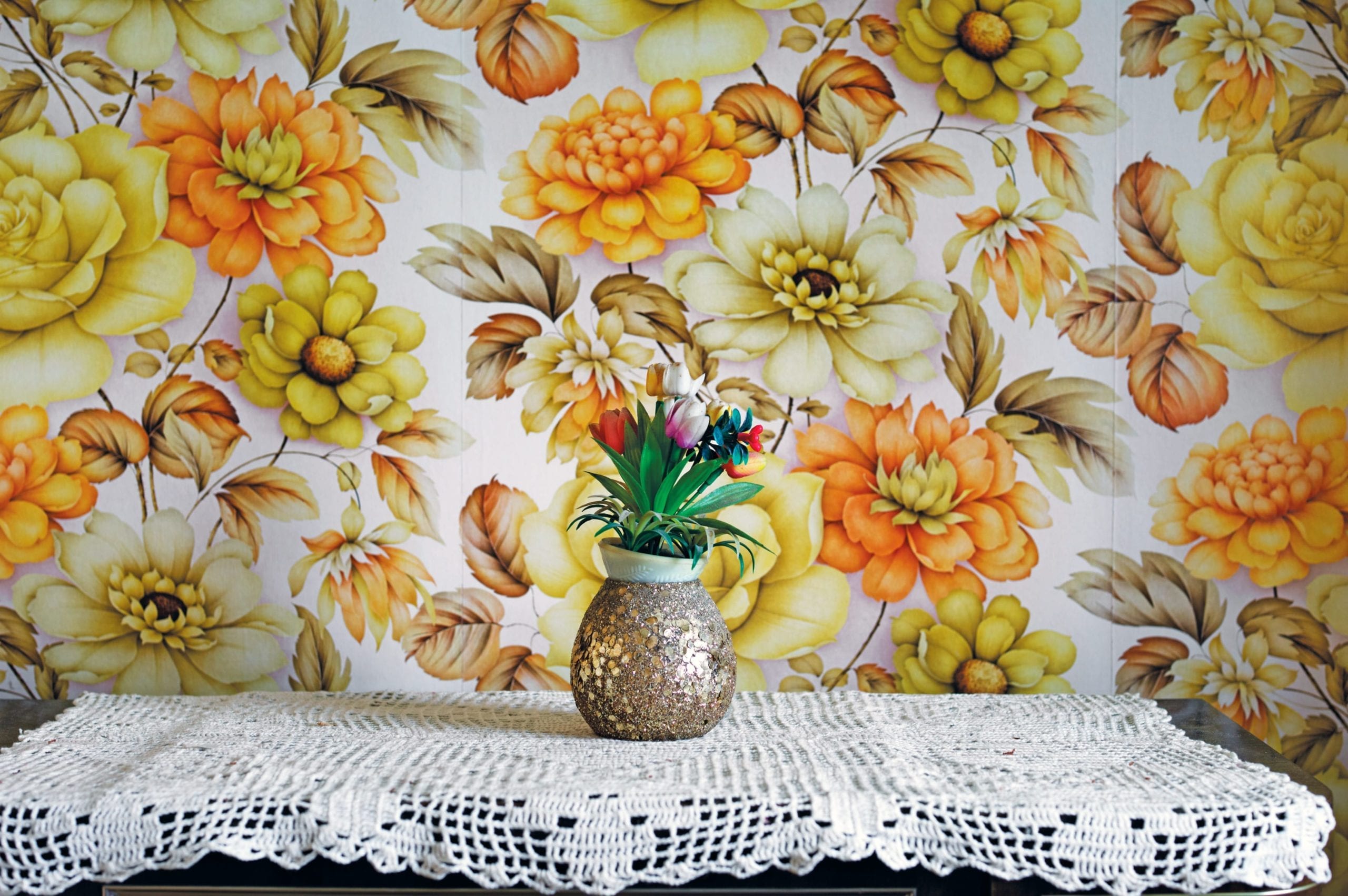
This is a photograph of flowers on a table. In the background is wallpaper of flowers. The theme of flowers is clearly therefore very important and relevant to this image.
The theme of flowers establishes the subjects interest in growing/collecting flowers. This is a very simple concept to accept however it is not clear straight away why. Because this is a photograph exploring the absence of Evard’s sister, it is logical to assume that the theme has relevance to their relationship, perhaps a symbol of Bergit’s death, or a hobby they did together. The emphasis of flowers invites the viewer to ponder this thought themselves . The fact it is not clear what the meaning of flowers is, is an example of Hoyland discrete and subtle style.
Visually, this is a very unusual image. It has a strong, bold and direct pattern. The flowers merge in the wallpaper, giving a flat two-dimensional perspective. The visual merging together of different components of the image create a sense of depth and complexity. The is something very imaginative and dream-like about this image, and the symbolic theme of flower adds to this sense of mysticism. It is up to the viewer to absorb themselves into the image and to come up with their own interpretation of its meaning.
The soft lighting makes for a tranquil mood and atmosphere to be evoked. This extends the dream-like theme established through the theme of the flowers and provides the image with a sense of calm and order. This gives a sense of lightness and to image, balancing out the more forceful presence of the flowers.
Evaluation
This is a very interesting and insightful series which looks at the theme of grievance and loneliness in a very subtle and poetic manner. The images are very ambiguous in meaning and it is up to the viewer to come up with their own meanings and interpretations. The context of this story is emotional charged, enhanced by the photographers ability/access to photograph the subject in a personal, intimate and revealing manner.
This project will be a good study to inspire my own personal study exploring the absence and symbolic presence of my granddad. In the photographs, the ghost-like presence of Bergit is present, this is similar to the signs of my Granddad at Nana’s, an invisible presence.
Other Images in Series

Still Life: Lamp Post which traditional hunting head.

Portrait: Candid portrait of Edvard, sitting on his bed.

Still Life: Ghostly, haunting image of a childhood doll.

Still-life: Edvard’s Kitchen.

Landscape: Barren, isolated landscape conveyed.
Haley Morris-Cafiero:
Morris-Cafiero’s recent project called ‘Wait Watchers’ includes many public reactions. Since she’d always been a bigger woman she was prone to bullying and many people would look at her strangely. Instead of ignoring them, she was interested by this concept and began to take self-portraits of herself in the middle of busy places. Morris-Cafiero’s aim was to capture strangers looking at her and see their facial expressions. Her interest for stranger’s reactions towards her body image began with one photograph. She was sitting on some stairs in Time’s Square and a man behind her was pulling a face at her. Since she saw that image she’s become fascinated and takes many public photographs. She stated: “When I got the film back even though we were in the visual overload capital of the world he was looking at me. I had nothing to do with him, and to capture something so quickly is interesting, so I’ve been doing that ever since.”
Here’s Morris-Cafiero’s original shot:

She describes her project in the following quote:
“I now reverse the gaze and record their reactions to me while I perform mundane tasks in public spaces. I seek out spaces that are visually interesting and geographically diverse. I try to place myself in compositions that contain feminine icons or advertisements. Otherwise, I position myself and the camera in a pool of people…and wait.”

I found it quite astounding how every single person in the family seems to be staring at her at that moment in time. It’s uncertain whether what their looking at or why they are. It could be due to interest, repulsion or they could simply be reacting to something else. To me, it’s very interesting to record their facial expressions as it says a little bit about them.

Morris-Cafiero put’s her camera on a tripod and set a self-timer of about 5 seconds. She then places herself in position doing ordinary things. The girl behind her appears to be staring at her upper leg. She seems appaled due to her parted upturned lips and her slightly closed eyes. However, this could be due to the fact that she saw the camera and did that as a result.

This image of hers was taken on a very busy area. Morris-Cafiero’s workout gear suits her surroundings of worked-up gym men. In our society, especially in the media it’s seen as shameful to be large. Therefore, the photographer probably isn’t as accepted by others as she should be. It’s intriguing to notice that all of the are looking at the woman at the same time. They could be thinking various things and be enticed by overcoming interest as she seems to be performing some sort of physical activity. Currently Morris-Cafiero is completely comfortable with her appearance instead she comments: “the idea that a glance and gaze is able to be captured is just really thrilling and interesting to me”.

In this image the photographer seems to have a frustrated expression as she pretends to talk on the phone. Oppositely the two policemen are looking as one of them is about to place his hat on her. It’s unclear whether they are being rude and taking advantage or if they are just playing an innocent joke. Nevertheless, it’s rather fascinating to contemplate on it.

For this specific shot, Morris-Cafiero is kneeling over to pick up something in a very crowded environment. Pedestrians look on as she evolves into a quite awkward and venerable position. Personally, I believe that this is a very good experiment to try out and would like to experiment with it.
She goes on to add:
“The images capture the gazer in a microsecond moment where they, for unknowable reasons, have a look on their face that questions my presence. Whether they are questioning my position in front of the lens or questioning my body size, the gazer appears to be visually troubled that I am in front of them.”

This photograph is another from a beach setting. A young and fit couple seem be casually strolling along. The young woman’s laughter comes across as making fun and she is obviously looking at the woman, Alternatively, she could’ve been smiling at something the boy said. However since people are becoming more and more obsessed with being ‘perfect’ according to the media’s standard’s, women may be becoming harsher to each other and judge solely on appearance.
The Media – Quick Overview
Whether it’s on the internet, magazines, newspapers, television, movies or photographs, the media is full of thin women with slim bodies and perfect curves. New technology allows for every single part of their bodies to be airbrushed even going as far as including people’s knees and armpits. For instance:

Models are a crucial part in influencing millions of people. They said on the ‘Mirror’ website (http://www.mirror-mirror.org/perfect-body-image.htm) :
“The modeling industry is an important aspect affecting the female’s body image. One popular issue is the promotion of the perfect and skinny body. Modeling industries strive to only have the most attractive and skinny model.”
The ideal body image has constantly changed overtime and is know very different. Apparently to be ‘healthy’ you mustn’t have excessive fat on you as that is seen as ‘shameful’.
Over the years ‘body modification’ was present and still is today. For example in prehistoric tribes which included pursuits to: flatten their skulls, elongate their necks and stretch their earlobes:



Women’s ‘ideal’ body over the years:
- 1880’s – wide hips/ medium small waist/ large breasts:

- 1900’s – with new technology and media spreading worldwide, people’s views changed:

- 1960’s – thin supermodels like ‘Twiggy’ popularized the ‘thin’ look.

- 2000’s – body image became more dramatized and people desired fitter and better figures.
- 2013 – now women are: concerned with their bodies and if they’re attractive to men and are viewed as objects for sexual gratification. Plastic surgery is more common and viewed as the ‘norm’.
Specification for December Half Term Shoot:
My next series of photographs is going to be a continuation of Faith, Family and Community.
Where I’m going to shoot?
Me and my family are going to the Portuguese island of Madeira. The island, which is situated in the Atlantic ocean has a great deal of tropical places on it. The diverse settings and unique background will make for some intriguing pictures.
Who I want to photograph?
Family that came on holiday with us:
Every year me and my parents travel to madeira in December to enjoy Christmas and the New Year. Accordingly my auntie, uncle and cousin have decided to do so as well. Since we all live in Jersey, it’s common for us to keep in contact and meet up, therefore I know them quite well. When in Madeira, we always arrange to meet up for several occasions. Therefore, I believe that this topic will be good to take pictures off and capture our daily lives.
Family Friends and Strangers from Madeira:
Since I have many family members that have lived in Madeira all their lives, I want to find out more about them and their hobbies.
I only visit them for about 3 weeks every year, so there is a big disconnection period between our lives.
Although I am present with them and get a glimpse of their lives and surroundings, I’d like to deepen my knowledge through the medium of photography.
I want to photograph them going about their lives as usual.
For example, my great-grandmother who still makes ‘Pao De Casa’ (house bread) which is a unique olden-day way of making bread in a stone oven, that’s situated outside.
Responses:
My pictures didn’t turn out as imagined
What Are Reactions?:
Reactions can be both physical and mental, although you can’t capture mental one’s through the camera. Every single living organism has some sort of reaction when exposed to a certain situation.
Evaluation for Spread
In my opinion the main image embodies all the segmentsof ‘Faith, Family and Community’. It includes a church in the background which is stereotypically associated to faith whilst showcasing my friend which I view as family and it includes the ‘125 hours’ guidebook that our photography group was given to complete as a community.
Planning: Shoots:
Shoot one:
For my first shoot I want to begin by photographing my grandmother. My grandfather was married to my grandmother for fifteen years, they had eight children together and remained very close friends after their divorce. When my grandfather died my grandmother found it very difficult to deal with, they were very close and she knows him as a husband and best friend. I think through photographing my grandmother I can grasp an understanding of an aspect of my grandfather’s life. I also want to interview her in order to figure out my grandfather’s life further and ask some more in depth questions which I haven’t had the option to ask before. I think this particular shoot is really important as it allows me to photograph someone invisible through another person.
Shoot two:
For my second shoot I want to begin to photograph objects which remind me of my grandfather. For example, letters, pottery, frames, flowers, foods, smells and special moments I shared with him. I think through photographing these items I can reconstruct my grandfather’s life. I want to cover my grandfather’s entire life, his childhood, his marriage, he jobs, his children and his grandchildren. I have found Abril’s work incredibly inspiring and influential. She managed to capture the invisible perfectly, Abril included lots of images of objects in order to tell the story. For example, she included medication and significant items like scales.
Shoot three:
For my third shoot, I am going to look through all of the archival images I have of my grandfather and family so I can include it in the book. A major flaw in my previous project was that I relied heavily on this style of image, however, I think it is important to have these photographs in the book as they represent my grandfather’s life. Laia Abril used archival images in her work The Epilogue it clearly worked extremely well and supported her other photographs.
Personal Study- Artist References
Artist References: Yury Toroptsov- Deleted Scene:
Yury Totoptsov’s journey in search of a father he never knew was led by an invisible path in order to photograph the invisible. With a relentless pursuit Toroptsov traveled to Eastern Siberia in order to tell us a unique but complex story. Toroptsov was from a rural community in Russia and was born in 1974. He left in 1998 to study in New York at the School for Social Research. His work has been featured in personal and group exhibitions in Paris and Moscow. Toroptsov’s project is very similar to Abril’s because both have tried to photograph the invisible. They have also attempted to capture someone’s story, life and personality, both are emotional narratives which approach difficult subjects many people struggle with.
Archisle International Photographer in Residence 2014: Yury Toroptsov
In 2014 Yury Toroptsov was the Archisle International Photographer in Residence. He worked on a new commission of work in Jersey from April to September of the year. The project explores Toroptsov’s personal view of Jersey, it is a narrative of his experience on the island and his interpretation of his visions. The entire concept was instrumented by a video of the Jersey Battle of Flowers 1937. Toroptsov intended to explore the mystery of the island as well as experience its uniqueness and beauty. Again this project also introduces the idea of invisibility.
http://toroptsov.com/en/projects/deletedscene.htm
Artist References: Laia Abril- The Epilogue:
The Epilogue focuses on the tragic story of the Robinson family. It tells the journey and aftermath of losing their beloved 26 year old daughter to bulimia. Laia Abril reconstructed Cammy’s life exploring her story through, letters, archival images, objects and memories. It highlights the victims of eating disorders and the suffering the family experienced. Abril demonstrated the difficulties many young girls face with their weight and how they perceive themselves. Abril deals with the hurt and grief that effects the family. The guilt they feel over their loss and the frustration of the limited control they dealt with. The project shows the mixture of emotions and the act of remembering a cherished one. Abril captures the invisible beautifully, with care and insight into the raw emotions the family fight everyday. Almost four years ago, Abril began a long-term project on eating disorders, with the First Chapter ‘A Bad day’. In 2012, she released her second addition to her eating disorder project, ‘Thinspiration’.
Abril is a documentary photographer and journalist from Barcelona. Her work has been published in many famous medias for example, The Sunday Times Magazine, Burn and Esquire. Her projects have been exhibited in Italy, London and New York. She is a member of the editorial team at Colors Magazine. However, more recently was a finalist at the Burn Emerging Fund 2012 and nominated to the Magnum Foundation.
I chose to research Abril’s project, The Epilogue, because it gave me an example of how you can photograph the invisible. This particular concept is very hard to actually put into practice and this is exactly what I struggled with for my previous project. Therefore, through studying and reading into how Abril managed to show Cammy’s life and reconstruct her world through her family’s memories thoughts and feelings, as well as, objects, letters, newspaper clippings and archive images. Part of the reason why The Epilogue has such an influence over me is because it manages to intertwine two mediums- images and words. It has them complementing each other, photographs have the ability to convey anything, it is completely your own interpretation, whereas, words are more limited as they can only express so many things. I also like that the book is absent of cliches, it does the narrative justice and allows the viewer to be emotionally awakened by the sadness. The book manages to get the readers emotionally invested and become attached through the powerful images and texts. It also reflects an interesting way of symbolising and representing memories, each photograph or item in the book has some significance in the young girl’s life. Abril has only included the vitally important aspects which needed to be shown in the book.
http://www.laiaabril.com/project/the-epilogue/
Personal Study- Specification
What is a personal study?
The goal of a personal study is to investigate, explore and challenge a particular area of interest. My personal study will need to reflect my opinions, ideas and creativity. It needs to include a written essay of 1000-3000 words and a photographic body of work of 250-500 photographs, plus, a number of final outcomes. From evaluating my previous project, I think I need to focus more on experimentation for this personal study in order to show my creativity. I also want to include letters, archive images and drawings from my grandfather’s life.
What artist movements can I include? What photographers should I include? Extra notes:
- Laia Abril
- Yury Toroptsov
- Philosophical articles
- Julian Germain
- Books- The photography reader, Basic Critical Theory for Photographers
- Final pieces- photo book, possibly a video, prints
Shoot Planning
Shoot 1 | Planning and Ideas
For this first shoot I want to make some more images of my niece just so that I have more images of her that I would be able to use as a backup in case my focus of my personal study doesn’t go according to plan. I will make images whenever she comes round and on Christmas day. I want to carry on with the same style of shooting from her perspective and what she sees as a little baby. I also think that it will be a nice way to just document the day and spending time with family. As I am working for most of the holidays I will only really be able to make images of my niece on Christmas day and boxing day but I think that I will make enough images that are interesting and that I am able to add onto the images that I have already made of her previously. I have also got an idea of doing a tableau shoot with her and stage different photographs featuring my little niece but this might be quite difficult as she is only 1 years old and doesn’t much understand composition or how to be still. This will be fun and interesting to do.
Shoot 2 | Planning and Ideas
For this shoot I will be taking inspiration from my Film Noir project and making night time tableaux images out on the streets of Jersey. Here I will get my subject to wear high heels with a trench coat stood near to a lamp post. This will be an interesting shoot to do and adds a sense of allure and mystery to my Film Noir images. I also want to make a few more femme fatale images and stage different women dressed as well known femme fatales and will edit them when I get back to add to my photo book. I also want to start thinking about making some extra images for my photo book of different elements of feminism and make some more documentary style images as well.
Shoot 3 | Planning and Ideas
For this shoot I will be making documentary style images of my family, more specifically my parents. I want to photograph them and show their roles in the house and how they differ. I think that this shoot will be successful as it is such a personal shoot to me and it really works well with my whole photo book idea. I want to make these images to show the almost old-fashioned ways of the older generations and show in a different way how even though they are stuck in their old ways that the newer generations are becoming a lot more equal in aspects of house work. I think that I might make some images of my sister and brother-in-law to show the differences and similarities in the way that they live with one another. I think that it is really only a more recent generation thing, my generation, that fully understands and takes on the idea that there should be an equal half and half scheme of cleaning and doing house chores. I think that these will be strong shoots and will reflect what my hypothesis is about and the way that I want to make a photo book incorporating real life documentary images along with staged images to add more of an effect on my spectators and so that they get the actual side of the story as well as the staged one.




